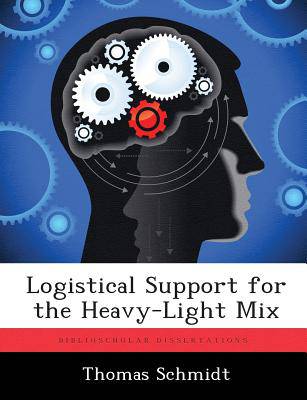
Door een staking bij bpost kan je online bestelling op dit moment iets langer onderweg zijn dan voorzien. Dringend iets nodig? Onze winkels ontvangen jou met open armen!
- Afhalen na 1 uur in een winkel met voorraad
- Gratis thuislevering in België vanaf € 30
- Ruim aanbod met 7 miljoen producten
Door een staking bij bpost kan je online bestelling op dit moment iets langer onderweg zijn dan voorzien. Dringend iets nodig? Onze winkels ontvangen jou met open armen!
- Afhalen na 1 uur in een winkel met voorraad
- Gratis thuislevering in België vanaf € 30
- Ruim aanbod met 7 miljoen producten
Zoeken
Omschrijving
This monograph addresses the logistical considerations of attaching a heavy brigade to a light infantry division. It first examines the historical background of combined arms to demonstrate the necessity of creating such a force. It then limits the scope by historically validating ammunition, fuel, and maintenance as the priority sustainment functions for a heavy unit. Further examples describe organizations and procedures which have successfully supported a heavy-light mix of forces in the past. These successes form the basis for evaluating the capability of the US Army's current logistical system to support the heavy brigade attached to the light infantry division. The parallels between the past and present show the logistician's determination to learn from history. While the physical ability to support this force is marginal, the logistical procedures, concepts of support, and a willingness to innovate all lead to the conclusion that, if asked to, the US Army logistical system can support this or any other envisioned force mix.
Specificaties
Betrokkenen
- Auteur(s):
- Uitgeverij:
Inhoud
- Aantal bladzijden:
- 50
- Taal:
- Engels
Eigenschappen
- Productcode (EAN):
- 9781288287895
- Verschijningsdatum:
- 12/11/2012
- Uitvoering:
- Paperback
- Formaat:
- Trade paperback (VS)
- Afmetingen:
- 189 mm x 246 mm
- Gewicht:
- 108 g

Alleen bij Standaard Boekhandel
+ 108 punten op je klantenkaart van Standaard Boekhandel
Beoordelingen
We publiceren alleen reviews die voldoen aan de voorwaarden voor reviews. Bekijk onze voorwaarden voor reviews.











